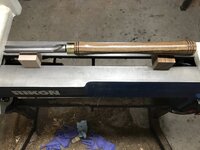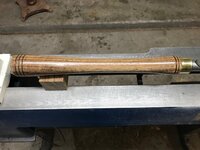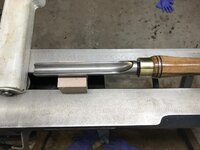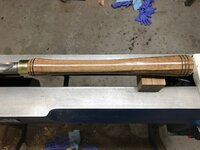TattooedTurner
Member
I made this handle for my Carter & Son roughing gouge. I used Shedua, sanded to P400, sanding sealer then the Beall buff. I'm very happy with it, especially for a first. That being said 2 things went wrong. I polished the ferrule to a high shine then ended up getting epoxy on it. I wiped it off but it still shows. Secondly, the handle was a snug fit and I couldn't get it all the way in. I'm certain enough epoxy was pushed down to the bottom to prevent it from going in any further because I did several test fits prior to gluing. No worries for me though, I'll be happy using this for years to come. Any advice on making these is welcome, I have another on deck.








